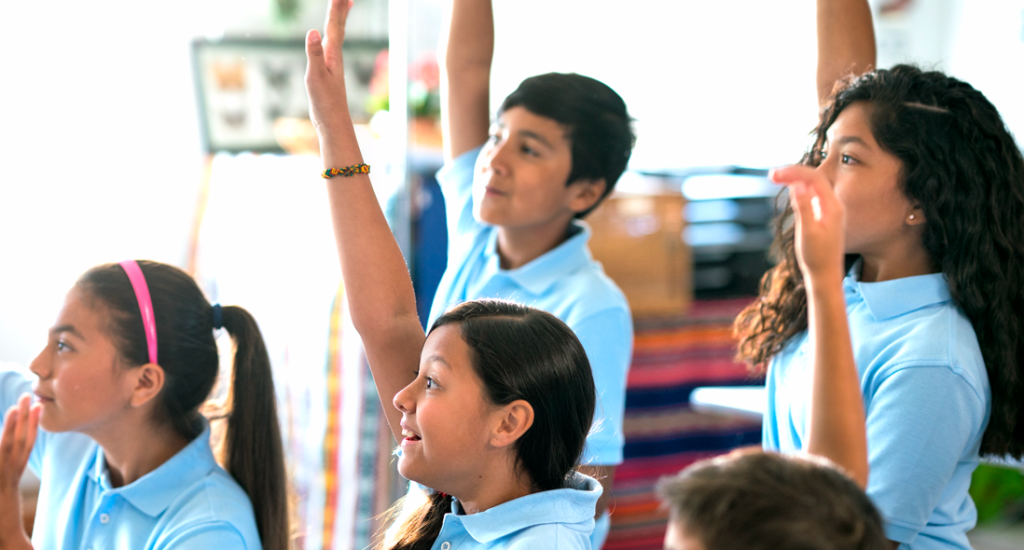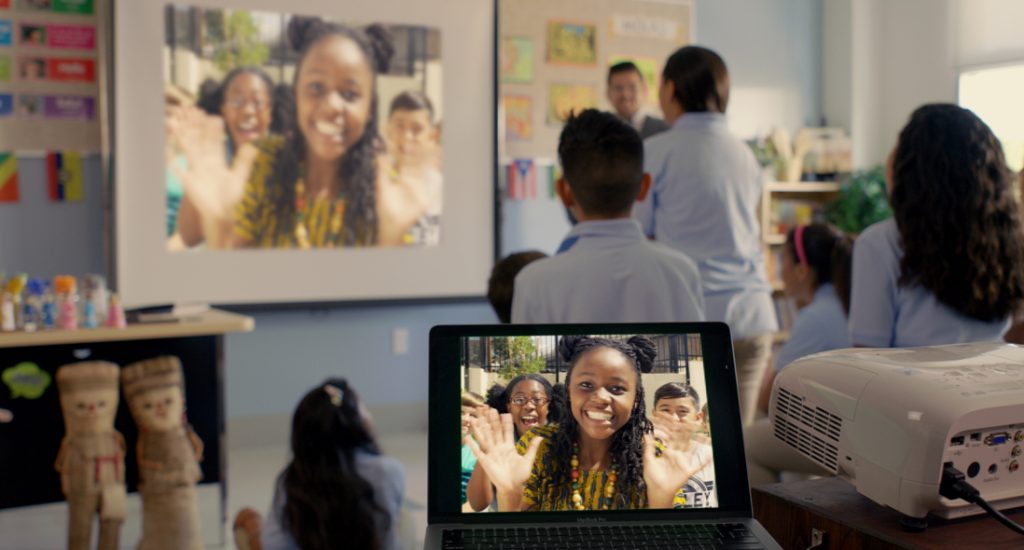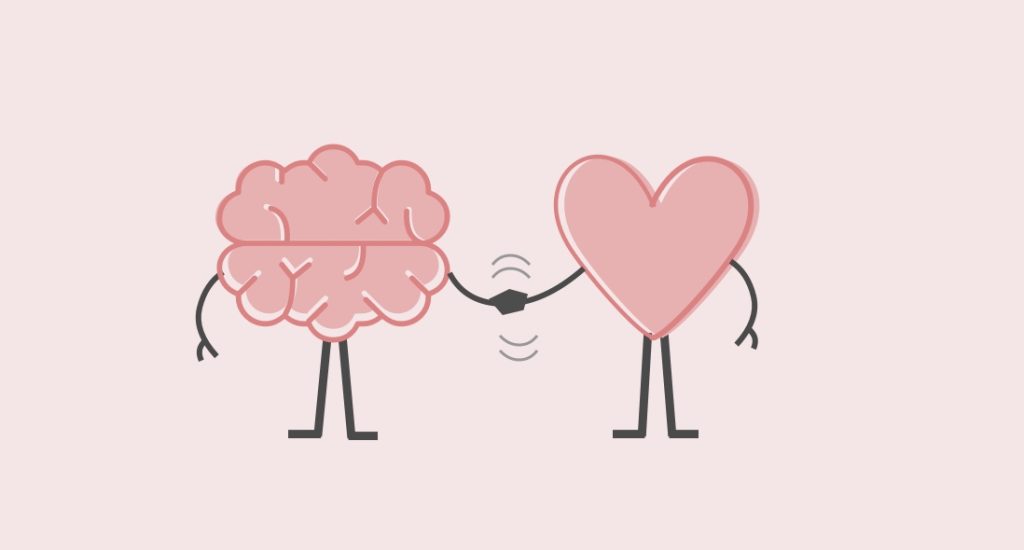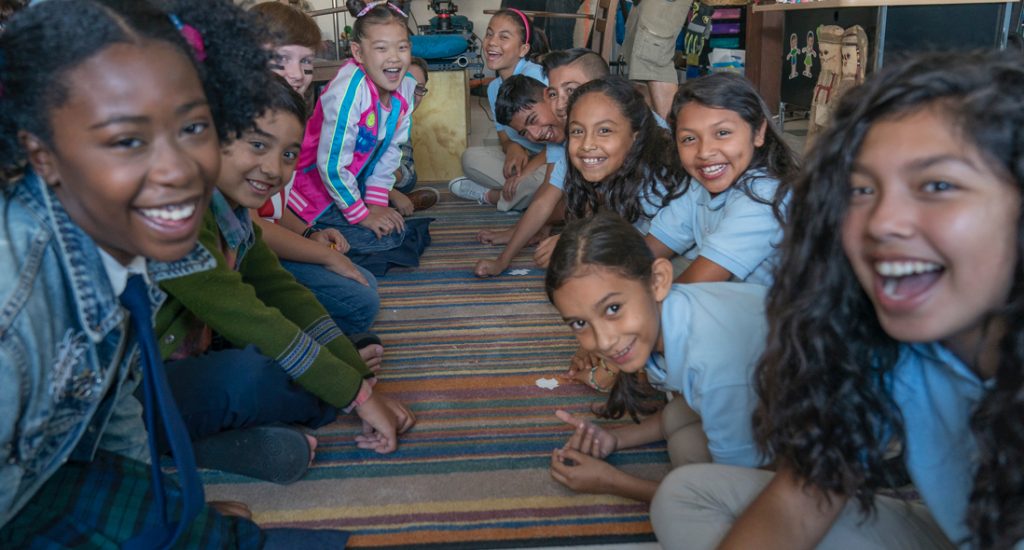Empathy is defined as the ability to understand and share the feelings of another person. It is not necessarily something that individuals have or lack and is often experienced naturally when you see another person who is in need of help. However, the ability to understand another’s perspective can be strengthened over time and expanded to more situations and people with the right practice. In many ways, empathy is a collection of skills that can bring about positive change in individual relationships, within classrooms, as well as across communities.
While it’s tough to claim that one can ‘teach’ empathy, educators can create experiences that help students exercise their ability to empathize with other people. In particular, educators can help students learn about their own points of view, appreciate different perspectives, think critically about different perspectives, and cooperate and communicate in a respectful, positive manner. Empatico activities incorporate each of these key skills to help educators and students as they practice empathy in the classroom.
Three types of empathy
Although there are several theories and definitions of empathy, most of them describe three main types:
- Emotional empathy: Physically feeling another person’s emotions. This involuntary response to another person’s feelings is difficult to “teach”, but can be modeled and discussed with students to help them understand the process and to apply it in more situations. (Similar terms include: affective empathy, reflexive empathy, physiological empathy, affective sharing, and emotional resonance)
- Cognitive empathy or “perspective taking”: Putting yourself in another person’s shoes to “take their perspective” and see their point of view. Perspective taking is a voluntary, conscious skill that can be honed over time, and is the focus of Empatico’s activities. After students learn how to see a situation through another person’s perspective, it then becomes easier to understand how that person is feeling, in essence enhancing emotional empathy, as well.
- Compassionate empathy or “empathic action”: This goes one step further in the empathy progression. After someone understands another person’s perspective (cognitive empathy) and feels what they’re feeling (emotional empathy), they may then feel the desire to help the person, which is compassionate empathy. This kindness to others can be modeled and practiced to show students what it means to help someone based on understanding their situation and feelings.
It’s also important to know the difference between sympathy and empathy. “Sympathy” means feeling concern (or pity) for another person’s misfortunes, which may create a difference in perceived power between the two people. In contrast, “empathy” means feeling with the person — as an equal — and truly understanding their situation, which strengthens the connection among two people.
Understanding another’s point of view and perspective
Empatico activities focus primarily on perspective taking, as it helps students relate to another person’s life experiences and can help foster meaningful connections among partner classrooms.
The ability to understand another person’s perspective requires three cascading components, which build upon each other:
- Recognize differences: First, students must recognize that others can have different thoughts, feelings, and knowledge than themselves.
- Understand influences: Then, they can begin to see how someone’s immediate circumstances, past experiences, beliefs, and culture can influence their perceptions and feelings. There is often a reason behind someone’s actions that are not visible (see iceberg visual below).
- Relate to differing perspectives: Finally, they can practice the skill of relating to another person’s perspective by thinking about their unique circumstances, experiences, beliefs and culture to see the world through the other person’s eyes. Students can try to find commonalities with their past experiences to relate to the other person’s experience and feelings, even if that’s different from what they would feel in that exact situation. Questions students can ask themselves: “What is life like for that person? What might be influencing how they perceive this situation? How can I relate to their experience to begin to understand how they feel?”

Using transformational moments to teach perspective taking and cooperation skills
One of the best ways for children to practice perspective taking skills in a practical setting is to provide them with opportunities to meet real students who come from another part of the world. During these fun interactions, students learn there are many different ways of life and many different cultures, beliefs, experiences, and circumstances that create different perspectives around the world. Students inevitably discover how their lives are similar to and different from their peers’, and with guidance from teachers, they can begin to truly understand what life is like for people in other parts of the world.
Students can learn how to cooperate with peers who are different from them by working together toward a common goal and respecting each other’s ideas and perspectives along the way. These abilities of understanding the perspectives of and working together with others who are different are difficult skills even for adults to learn. Rather than trying to teach these complex skills through theoretical exercises, it’s more effective (and exciting!) for students to learn these insights in a fun, practical setting while interacting with peers, which will help solidify their learning. The experience of building a meaningful connection with someone who is different can become a transformational moment in a child’s educational journey that can influence their perception of the world.
Thinking critically to understand other perspectives and practice empathy
Critical thinking skills can greatly enhance students’ ability to understand other perspectives, feel how others are feeling, and act with compassion. Many conflicts are due to misunderstandings caused by one person not fully understanding the other person’s perspective. To help students overcome these misunderstandings in the future, we can teach them to try to learn more about the situation and the other person’s perspective before making conclusions.
The three steps of critical thinking social skills involve:
- Recognize that assumptions and opinions are not facts — they are personal interpretations
- Ask yourself if you have all parts of the story
- Investigate new explanations with an open and curious mind
To help teach critical thinking skills to students, the Empatico Skills Mini-Lesson guide uses a modified version of the “Ladder of Inference” model developed by Harvard professor Dr. Chris Argyris. First, students learn how to observe evidence and ask themselves if they have all parts of the story. Then, based on the facts they observed, they think about other possible explanations and test their assumptions, which usually involves directly asking the other person a question rather than accusing them of something. Finally, they make conclusions and take action based on their investigation of the situation, making sure their conclusions are based on their own observations rather than hearsay from someone else.
Establishing norms of active listening and respectful communication in the classroom
In order for students to apply their perspective taking and critical thinking skills to any situation, they must also have the ability to actively listen and respectfully communicate with their peers. This will help students have more meaningful conversations with others and deepen their learning about other perspectives and experiences.
The components of respectful communication are:
- Actively listen to the speaker
- Make eye contact and turn your body toward the speaker
- Focus on what the person is saying (don’t think about other things)
- Show interest in what you’re hearing by using nonverbal cues, such as nodding or facial reactions
- Take turns speaking, waiting until the speaker is done before responding
- Respond in a respectful and positive manner, whether you are agreeing or disagreeing with what was said
Here are a few tips for reinforcing respectful communication skills in the classroom:
- Model respectful communication skills by having a practice conversation with a student (e.g., by asking what they did last weekend) and think aloud as you demonstrate the steps of respectful communication (active listening, posture toward the speaker, etc.). Repeat with another student, but this time model what not to do by avoiding eye contact, looking bored, interrupting, etc.
- Work as a class to come up with a collaborative definition of respectful communication and how this skill can benefit students and apply to different situations. Write the definition on a poster, and refer to (and revise) this list throughout the year as relevant situations arise.
- Consider using a ‘talking stick’ or other small object during discussions to signal turn-taking. When a student has the object, it’s his/her turn to talk and everyone else listens.
- Post a list of sentence starters (or print on notecards for each student) that can help students respond respectfully and empathetically during conversation.
- Reframe negative comments, e.g., ‘What you meant was that you don’t agree with what was done’ and prompt the student to consider why she/he reacted that way, e.g., ‘Why do you feel that way? What would you have done differently? What are some other potential explanations/solutions/ways of doing this?’)
Establishing norms of respect, kindness, and empathy for all
It’s important for teachers to establish a supportive, respectful classroom environment so that students internalize the norms of being respectful and compassionate toward all peers, no matter who they are or what they look like. Peer group norms can strongly affect a student’s use of perspective taking and critical thinking skills, or even negate them completely under certain circumstances. For example, if Student A’s peer group makes it seem “cool” to be disrespectful to other students who look or act differently from them, then Student A will be less likely to apply his perspective taking skills to understanding peers who are different from him. In order to reduce these instances, teachers can establish the importance of kindness, empathy, and respectful communication throughout everything they do in the classroom.
Here are a few tips for how to establish a supportive, respectful environment:
- Teach and model respect, empathy, and kindness for all. Your behavior will signal norms to students and help build a stronger community in your classroom.
- Ask students what they think it means to be respectful and kind, and hang the class definitions in a place where students can refer to it throughout the day.
- If a student is disrespectful in any way, intervene immediately. Encourage perspective taking skills by guiding the student toward understanding why their behavior could be offensive or hurtful to the other person, and then help them reframe their comment or behavior in a way that conveys respect and kindness.
- Promote equitable perceptions among all students by reminding them that everyone is unique and has their own strengths and weaknesses. If you recognize any ‘power language’ (anything showing that the student feels inferior or superior to others), help the student see themselves as equal to their peer in terms of personal traits. One strategy is to ask the student to consider the many different abilities and traits required to be a “good student”, a “good friend,” etc. Then start a relevant discussion: “No one has all these abilities and traits, but we all have some of them. What are some of your strengths?… What might be some strengths of your peer?…”
Practice, practice, practice!
Practicing these skills can help establish a supportive, respectful environment in the classroom and strengthen connections among peers, which create the building blocks for more empathetic relationships. As an educator, you can support your students by modeling positive behavior through language, expressions, and demeanor, and providing students with fun opportunities to hone their skills in an practical setting – such as connecting with peers from another part of the world.
For more information about these skills and activities you can use in your classroom, check out our Empatico Skills Overviews & Mini-Lessons and our Teacher Tips for Intercultural Experiences. You may also want to check out these additional resources from Edutopia and Getting Smart.
And if your students are ready to practice their new skills with a partner class, try an Empatico activity by signing up for a free account.
“It’s about finding the similarities not just the differences — it’s finding the humanity in all of us. They learned that we can all talk together, even if we don’t know each other. It’s about not being afraid of asking questions and really listening.”
– Vicky Masson, PK-8 Spanish Teacher



